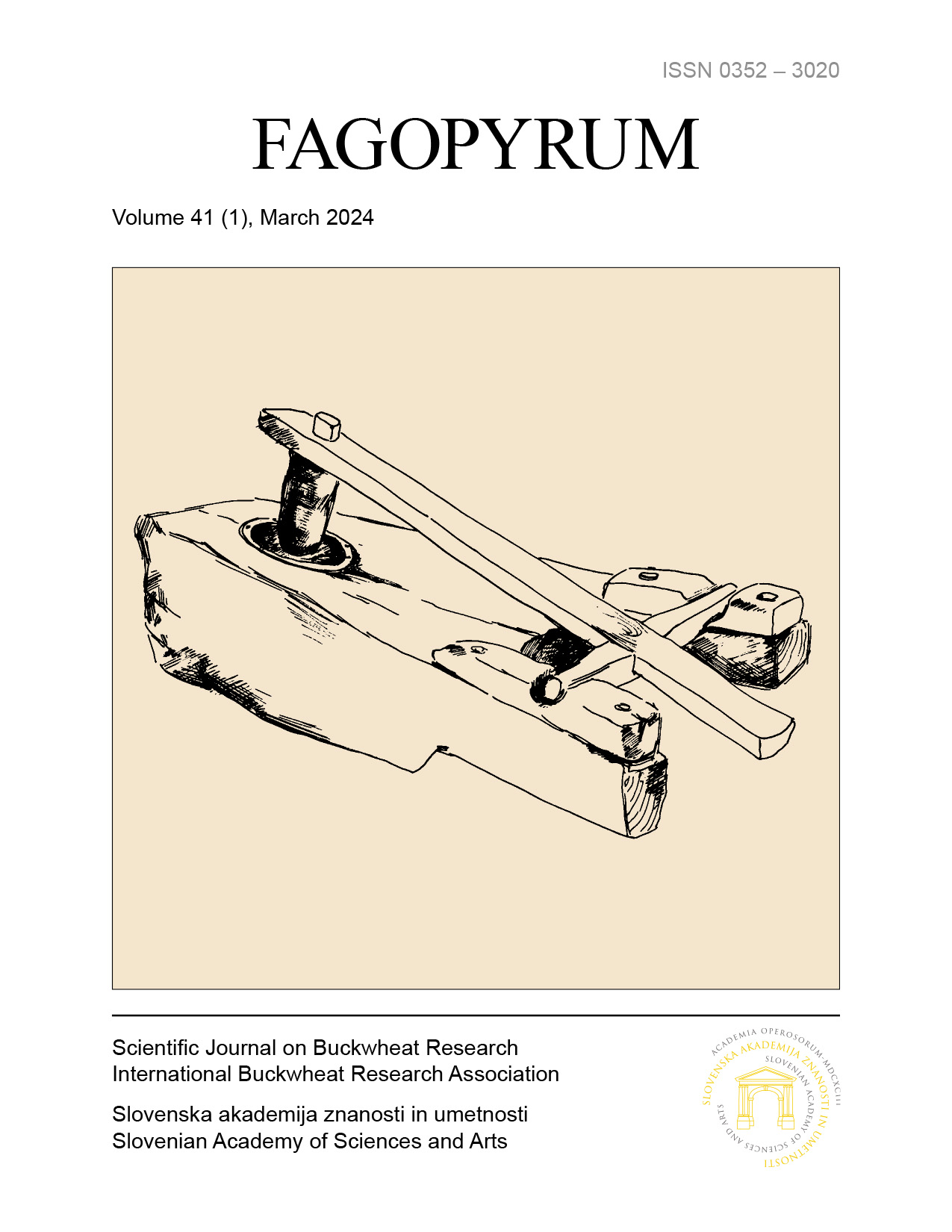Adaptability of Buckwheat in vitro
DOI:
https://doi.org/10.3986/fag0038Keywords:
common buckwheat, in vitro, heavy metals, selective media, survivalAbstract
The research goal was to study the morphogenesis of common buckwheat plantlets obtained using different stressors in vitro. The research object was common buckwheat variety Izumrud – single-node cuttings (1.0-1.5 cm in length; two-three lowest internodes) of the plantlets that were obtained by subculturing on a hormone-free MS medium and of the lines that showed tolerance to CuSO4 Å~ 5H2O (161 and 184 mg/l) at the Laboratory of Agricultural Biotechnology. Selective media were prepared based on the Murashige and Skoog medium supplemented with a zinc salt (ZnSO4 Å~ 7H2O) at concentrations of 808, 909, 1010, 1111, 1212, and 1313 mg/l. To evaluate the morphological characteristics of the studied genotypes, their parameter values were calculated relative to the control and expressed as percentage. The genotypes were compared in the following groups depending on the exposure to a certain stressor: group 1 – the genotypes obtained without exposure to copper, group 2 – the genotypes obtained on the media containing the copper salt at a concentration of 161 mg/l, and group 3 – the genotypes obtained on the media containing the copper salt at a concentration of 184 mg/l. Plants from different groups demonstrated dissimilar growth rates under the toxic conditions caused by the studied concentrations of zinc. The morphological parameter values of the copper-tolerant plants (groups 2 and 3) were significantly higher than those of the plantlets obtained without exposure to copper. The plantlets tolerant to CuSO4 Å~ 5H2O (161 and 184 mg/l) showed a heightened resistance to the selective factor (Zn) as evidenced by their high regeneration and survival rates (95.7-100%).

